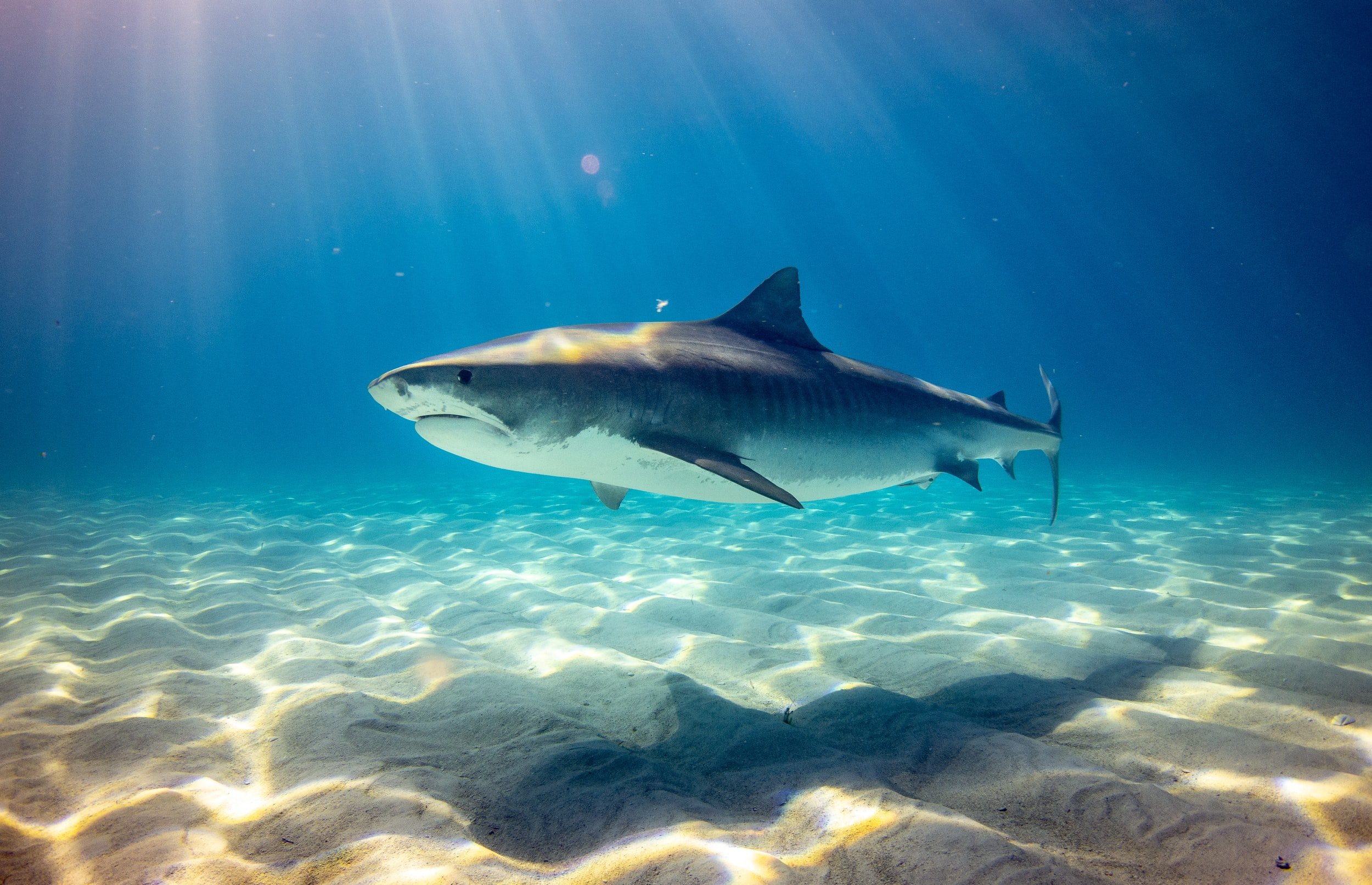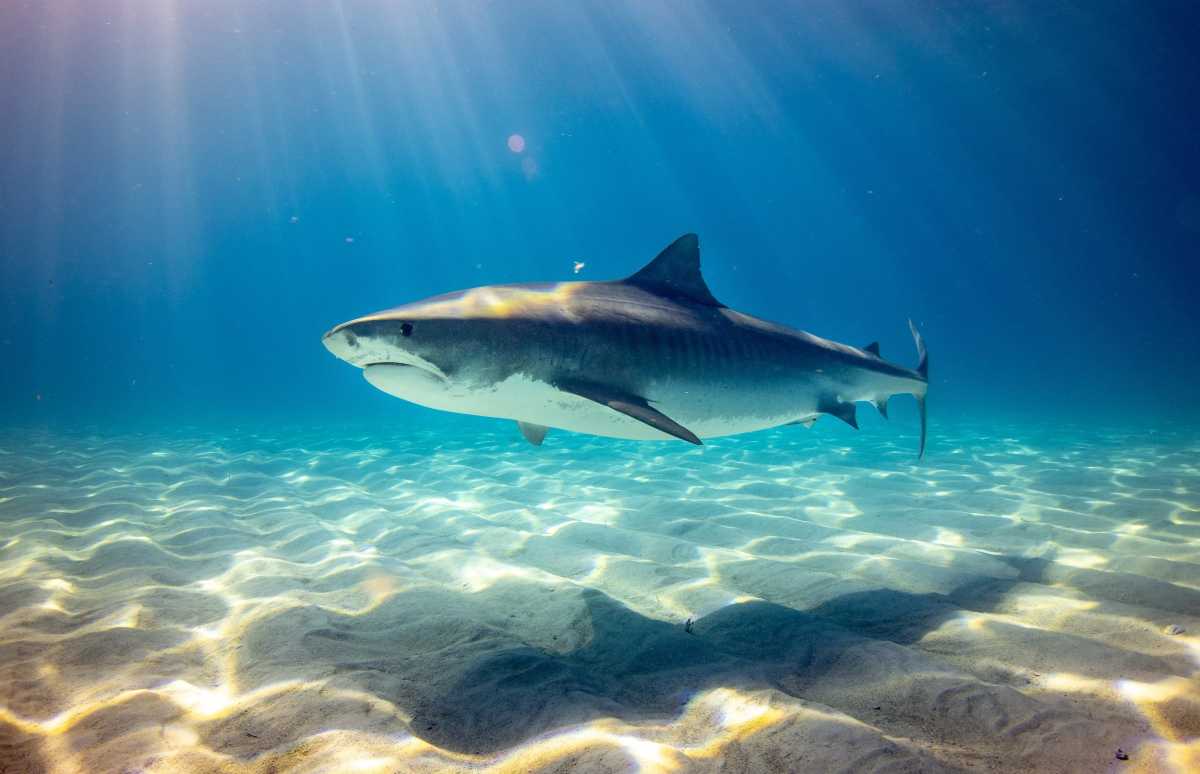
Days after three recent shark attacks off Long Island’s shores, a research team was out on the water on Saturday, July 9, hoping for another shark bite, albeit under different circumstances. The Shark Research and Education Program waited for a shark to take the bait so they could tag the animal and track it for movement, habitat usage and additional data. While many people may fear the rise of the shark related incidents in recent years, this program emphasizes the necessity of protecting sharks.
“Mother nature has built a system that has checks and balances and sharks are a very, very important piece of that check and balance,” said Greg Metzger, the program’s field coordinator. “If we were to get rid of sharks, that would allow other populations to explode and ultimately crash because there isn’t enough food to feed the fish.”
Metzger discussed how sharks are vital to our marine ecosystems and explained he may end his phone call any moment if a shark bites the line. The conversation about sharks was filled with positivity and excitement, a stark difference from the usual daunting discussions concerning the rise in shark sightings. The science behind the mysterious increase in shark attacks can be traced back to the hard work of ocean conservation scientists and advocates like Metzger.
“All of these conservation efforts that have been put into place are working,” said Metzger. “You see more prey, which means you see more predators.”
The increase in sharks unfortunately pairs with a well known con: shark attacks. The most recent apparent shark bite as of this writing took place in Kismet, on July 20, when a 16-year old surfer suffered a shark bite to his right foot. Lifeguards were not on duty at the time he sustained his injuries. On July 13, a paddle board surfer at Smith Point Beach was bitten, and a few hours later a man from Arizona suffered shark bites while swimming offshore in Seaview. During a lifeguard training exercise around on July 7, around 11 a.m., a lifeguard in the Village of Ocean Beach suffered a bite to the ankle and was taken to South Shore University Hospital in Bay Shore. This comes after a Smith Point County Park lifeguard was bitten by a shark on July 3, during another training session in the morning. The lifeguard of 10 years was taken to the hospital and received stitches in the hand and chest. Three days earlier, a 37-year-old man suffered from a possible shark bite at Jones Beach.
To date none of the incidents have resulted in death or life threatening injury, but it follows an un- settling pattern of shark bites in recent years. This has caused some people to adopt a Jawsesque mindset this summer, but shark populations appear to be growing at the same rate as the number of people swimming in the ocean.
“The overall number of negative interactions seem to be going up, but statistically it is still almost zero,” Metzger said.
For those who still cannot get the image of “Jaws” lurking in the waters out of their head, there are a few tips Metzger suggested for staying safe and coexisting with a healthier ocean.
“The best way to get ahead of this mentality craze is to educate yourself on interacting with a more conserved and natural ocean,” Metzger advised. “Some of the things people can do is be aware of when people are going in the water. If there is a large school of bunker in front of where you are swimming, you probably should not go in the water.”
Bunker fish are the main prey of sandbar sharks, dusky sharks, sand tiger sharks and spinner sharks, the main four species of sharks in Long Island’s waters. The bunker fish will eventually move further down the beach and you can resume swimming after. Sharks also tend to feed in the evenings or mornings when the light is dim. Swimmers can use this knowledge to stay safe while enjoying the ocean. Real-time tracking technology is being developed and implemented in areas around the world, but not in New York yet.
While an increase in sharks, slight or large, may sound alarming, it is overall a sign of a healthier and more abundant ecosystem at large. The New York Department of Environmental Conservation states sharks’ crucial role in the ecosystem as apex predators to remove sick and weak prey and regulate the marine environment. Scientists and marine conservation activists have been working to con- serve all levels of the food chain and to stop killing whales, dolphins and sharks.
One explanation for the rise in sharks contradicts the healthier ecosystem statements, as it contributes the presence of new shark species to climate change. Spinner sharks are typically found in warmer waters, with New Jersey as the northern border of their territory. This warm water loving species was spotted in Long Island’s waters this summer and the previous year by Metzger and his co-researchers.
“Being on the water and fishing in the same areas year after year, last year was the first year that our team had seen spinner sharks in those numbers,” Metzger said. “Typically, that is a warmer water species. We were curious this year if they were going to come back again or was last year an anomaly? From the fishing we’ve done so far this year it seems those sharks are back.”
The cause of spinner sharks’ presence could be due to the increase of prey in our waters, but it could potentially be caused by the warmer waters. The U.S. Environmental Protection Agency (EPA) recorded an average increasing rate of 0.14°F per decade from 1901 to 2020. The notion that an increase in sharks is due to global warming has not been proven by scientists yet and some studies even show warmer waters can result in weaker baby sharks, ultimately decreasing the adult population of healthy sharks. Climate change impact on sharks will continue to be studied in the years to come.
Nevertheless, scientists and marine life conservation activists view the rise in sharks as an overall positive sign that their efforts to maintain a healthy ecosystem are working. This can still be an unsettling fact for swimmers, but it is important to remember that Long Island’s sharks serve the purpose to eat bunker fish, which are small prey. Avoiding the bunker fish is best, but even so, Metzger explained that swimming by sharks’ prey only potentially in- creases the chance of interacting with a shark “from 0 percent to almost 0 percent.”
“We never hear the exact account of where and what the situation was when the person had a bad day with the shark,” Metzger said. “Were they swimming or paddle boarding at the edge of one of these bunker schools with sharks feeding on it? If that’s the case, it would be like playing catch football in the middle of the LIE at 4 p.m. on a Tuesday.”



























